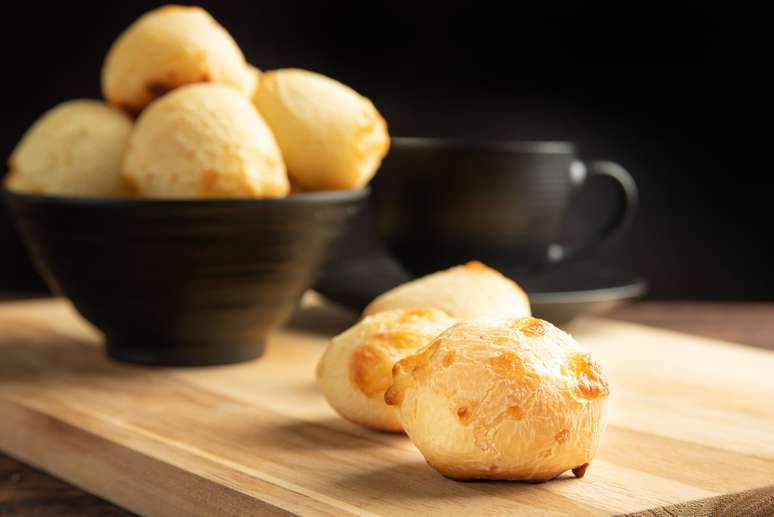Understanding how each starch works influences your recipes, especially the famous cheese bread.
All or almost all Brazilians are fans of good cheese bread. If you’re from Minas Gerais, don’t even talk about it. There are thousands of recipes out there, some call for sweet tapioca starch, others sour starch. But do you know the difference between them? I will explain step by step how each one is made and how it works in the recipe.
Both tapioca flours are derived from cassava. When grated it releases a whitish liquid that contains a lot of starch, also called “cassava starch”.
To produce sweet cassava starch, you just need to dry this liquid extracted from cassava and it’s ready. A quick and easy process, it has a delicate flavor and offers elasticity that resembles cheese when melted. Used in recipes it gives rise to a soft, round and elastic cheese bread.
The acidic starch in tapioca undergoes a fermentation process, meaning the liquid extracted from the grated cassava is stored for up to 40 days and then dried, giving it a more acidic flavour.
After drying, the appearance of both starches is the same, but when applied to recipes it makes the cheese bread harder, becomes more misshapen when baked, and has a more intense flavor. Unlike sweet tapioca, it is not elastic and leaves those “bubbles” inside the dough, not to mention its crunchiness.
Mixed in the recipe, each has its own characteristics, which can vary depending on the proportions, that is, the more sweet cassava starch, the softer it is and the more acidic it is, the more solid it is.
Source: Terra
Ben Stock is a lifestyle journalist and author at Gossipify. He writes about topics such as health, wellness, travel, food and home decor. He provides practical advice and inspiration to improve well-being, keeps readers up to date with latest lifestyle news and trends, known for his engaging writing style, in-depth analysis and unique perspectives.








